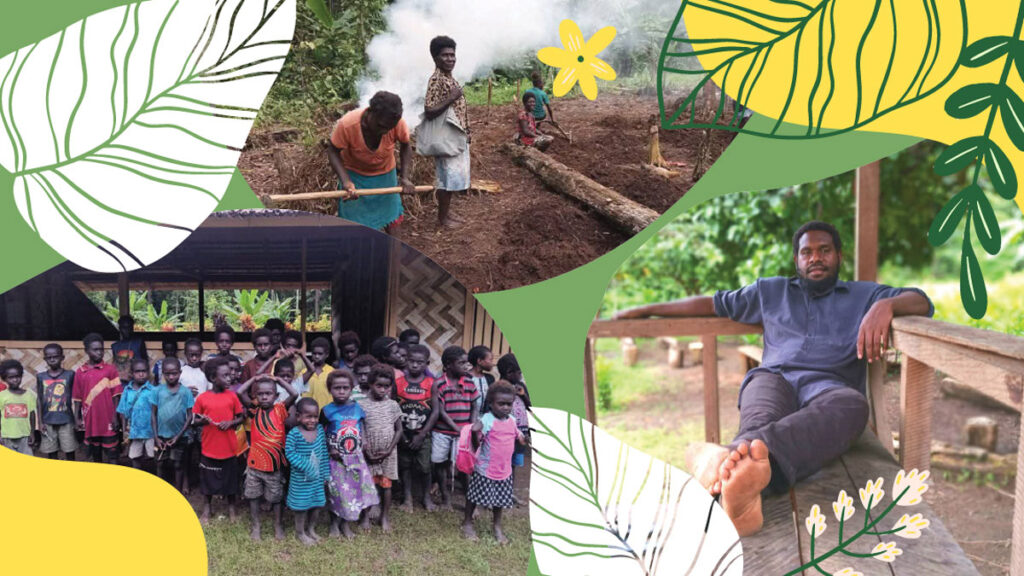Imagine the Adventist Church in the South Pacific region planting new churches as rapidly as first century Christians did or as the Advent movement pioneers did in the 1870s and 1880s. What would that look like today? Exciting? Challenging? Out of our control but under the control of the Holy Spirit? The more important question is: What would need to change in the Church and in my life for this promise to become a reality?
The promise is certain. John prophesied, “I saw another angel come from heaven. This one had great power, and the earth was bright because of his glory” (Revelation 18:1 CEV). Ellen White interpreted John’s vision this way: “The great work of the gospel is not to close with less manifestation of the power of God than marked its opening. The prophecies which were fulfilled in the outpouring of the former rain at the opening of the gospel are again to be fulfilled in the latter rain at its close” (GC 611.3). Maybe we are like the father of the possessed boy and we need to pray, “I believe; help my unbelief!” (Mark 9:24 ESV).
Within 60 years of the death and resurrection of Jesus, thousands of churches were planted in “Jerusalem, Judea, Samaria and the ends of the earth”. In 1870, the fledgling Adventist movement planted 1822 new churches in North America when the membership was just 5440 and the US population was under 40 million. By 1890 the Church was still planting 768 churches a year in North America. But the disciple-making movement stalled. In 1990 only 30 churches were planted in North America.
In March 2015 I was part of a Discipleship Study Tour with pastors from across the Pacific island nations. The tour visited churches and church offices in Australia, New Zealand, Philippines and Laos. We met with pastors and administrators and talked with involved church members. We visited large established churches and small church plants. These churches were in countries where people were passionate about Christian faith and in countries where people were indifferent to faith. We saw the Church growing in a Communist country where Buddhism is the official religion and evangelising is forbidden. What we saw reminded us of the growth of the first century Christian church and the early Advent movement churches. What characterised these growing disciple-making churches?
1. People with a passionate faith in Jesus
Jesus was paramount in the lives of the people we visited. They manifested a trust in Jesus. They had experienced the “joy of salvation” and were sharing it with others. As Jesus said, “When I am lifted up, I will draw all people to myself” (John 12:32 ESV). Living for Jesus and being obedient to His command to make disciples of all nations motivated their lives.
2. People with a confidence that God will grow his kingdom
Whether these churches were in secular Australia or the religious Philippines, the inner city or outer suburban public housing estates, on university campuses or in rural villages, the leaders and members of these churches believed that God would grow His kingdom. They took Jesus at His word: “I will build my church, and the gates of hell shall not prevail against it” (Matthew 16:18 ESV). The leaders in Communist Laos believed the promise and knew that God would grow His kingdom. Joseph Kidder from Andrews University, in his book The Big Four, says, “The most important ingredient in church growth: faith-based optimism.” Faith-based optimism is confidence in Jesus’ promise to build His church.
3. People involved in small groups
Fellowship in small groups was a part of each of the churches we visited. The groups had different names in different churches. Some called them small groups, others called them home groups or care groups, but they had similar characteristics. They were providing fellowship, care and support, and Bible reading that applied the Word of God to everyday life. Food was often a part of the shared time. Members enjoyed the groups so much they were inviting friends and neighbours to be a part of the group. It’s not surprising that one of the well-researched “natural church development” characteristics of a healthy, growing church is “holistic small groups”.
4. Members being friends of unsaved people
Friendships with unsaved people were a natural part of everyday life. They were friends with other students at university or other mums with children at the same school; with work associates in the CBD or other families in the same rural village. Most were not doing evangelism but were living evangelistically. They saw every relationship in life as a God-given opportunity to live their Christian faith and share naturally as the occasion presents.
5. Ministries that met the needs of people in the community
These ministries were as varied as the places we visited. In one area in rural Laos, they were teaching sewing skills to produce items that the community sold at the tourist market while in another area it was sports activities for local youth. A number of churches were engaged in community health programs while others were providing tutoring. Some were organising food pantries and housing for people in disadvantaged situations; others were providing life skill training and support. They were following Jesus’ example of mingling with people, desiring their good and ministering to their needs (MH 143). [pullquote]
Imagine the Adventist Church in the South Pacific planting new churches as rapidly as first century Christians did or as the Advent movement pioneers did in the 1870s and 1880s. It’s in your hands. Look to Jesus again. Begin to read a part of the story of His life and ministry every day. Pray that the Holy Spirit will give you a passion to obey His command to make disciples. Become a friend to an unsaved person and pray that God will give you opportunities to talk about your faith. Watch as the Spirit grows faith in their lives. Does this picture excite and challenge you? Maybe God is calling you to be part of planting a church in your community.
Dr Leigh Rice leads discipleship ministry at the South Pacific Division in Wahroonga, NSW.






